

Diseases, disorder, condition, genetics, genes, cystic fibrosis, Turner syndrome, Klinefelter syndrome, Patau's syndrome, Down's syndome, generations, mutations.
A genetic disease, or disorder, is a disease that can happen to someone later in life because of a genetic trait (such as Huntingdon's Disease), or that someone is born with (such as Down's Syndrome). What they have in common are that they are types of genetic disease or disorder.
So, a genetic disease is a mutation of someone's genes, and they are passed down through generations. So if your father had a genetic disorder, he can pass it on to you, and so on with your children, and your children's children. The same goes for it back through the family tree.
It can also skip a generation. That's right, if your father didn't have a genetic disorder, but your grandfather did, then you could effectively have this disorder.
There are also different types of disorder, as follows:
The following still is from a video on inherited disorders, with the following details:
Please click on the image to view the video.
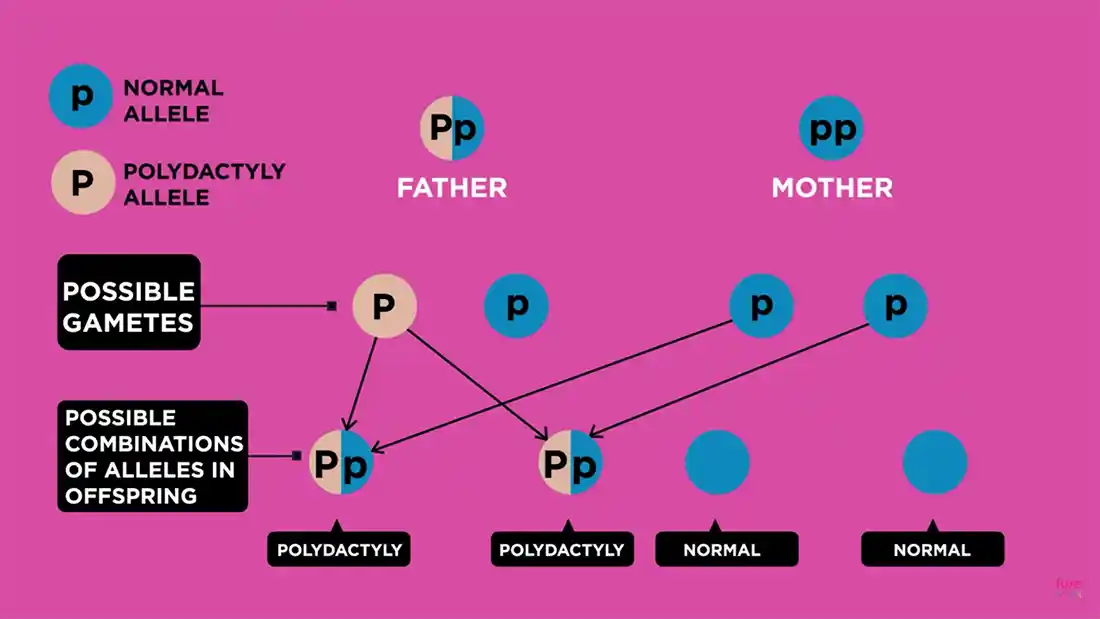
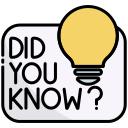
A 7-year-old girl named Olivia is the only known case of Chromosome 6 deletion. She does not feel hunger, pain or need to sleep. In 2016, she was hit by a car and dragged nearly 100 feet, but felt no pain and emerged with only minor injuries.
Some common genetic diseases include:
Cystic fibrosis, genetics, disease, alveoli, bronchials, mucus, cilia, airways, organs.
Cystic Fibrosis is a genetic disease that affects multiple organs. It mainly affects your lungs, and limits your ability to breathe the longer you have it. If you take a look at the lungs, there are two pathways called bronchus, and they branch out into bronchioles. These are smaller airway 'tubes' that allow you to breath. These tubes are covered with a thin layer of mucus. This mucus performs a cleaning exercise to help clean your airways as you breathe in and out. The hairlike cilia move the mucus away from the lung area.
Okay, so that explains what the lungs do, and you should already know that as well. Cystic Fibrosis is a genetic disease that doesn't allow the mucus to move away by the cilia. Over time, this thick mucus can eventually block your airways, and create a mucus plug at the end of the bronchioles.

People with Cystic Fibrosis are encouraged to stay six feet apart from another person with the same condition. This is due to certain types of bacteria that can be passed between them, as they are the only ones that carry these bacteria.
There are symptoms that you can get if you have Cystic Fibrosis, and they include:
Obviously, over time, your respiratory system will become more and more susceptible to infection, and more and more bacteria and germs will infect them. Having said that, there are treatments you can take to help prevent further infections and to control any lung damage you may have.
The following still is from a video on cystic fibrosis, with the following details:
Please click on the image to view the video.

Polydactyly, extra fingers, extra toes, appendages, surgery, genetic disorder, birth condition.
We don't all have this condition, but it is given at birth. It can be passed down through generations, meaning it is a hereditary genetic condition that gives a baby an extra finger, toe or appendage.
Generally speaking, it is the most common occurence of hand and feet defects at birth, but sometimes it doesn't affect anything else with the baby, and they can grow up being healthy and without impairment. It can also occur with other defects during birth, with the addition of other genetic syndromes.
Polydactyly can occur naturally, although it is considered a genetically inherited trait.
The following still is from a video on polydactyly, with the following details:
Please click on the image to view the video.
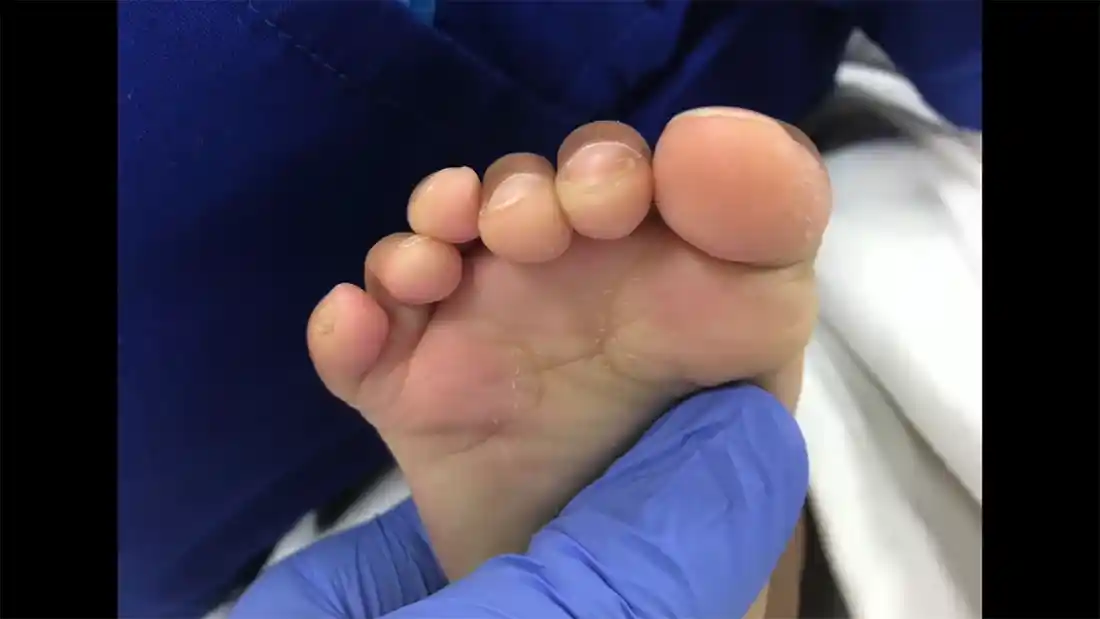
When a baby is born with an extra finger or toe, it sometimes means that it needs to be removed. This can be because there is no bone structure to it, or just because it will give the rest of the hand or foot the best outcome.

Cats can be born with polydactyly. This gives them what looks like an opposable thumb, and means they could grip items and objects like a human can.
A baby with polydactyly can have any of the following symptoms:
They can be located:
So, as I mentioned above it's a genetic condition. It can affect one out of 500 babies, and usually it's only the one hand or foot that is affected. Black children are more inclined to have an extra finger, whereas Asian and white children are inclined to have an extra thumb.
Down's syndrome, genetics, DNA, deoxyribonucleic acid, chromosome 21, trisomy 21, facial features, learning development, lower IQ, treatments.
A genetic disease that wasn't fully understood until the 1970s, Down's Syndrome is where a baby has an extra chromosome (more precise, an extra copy of chromosome 21). This is known as 'trisomy', and you may find Down's Syndrome also being called Trisomy 21.
As a baby develops within the womb, and once born, Down's Syndrome can change how the body and brain develop, and this can cause mental and physical problems later in life.
Although a child with Down's Syndrome can act like a normal child, they might have a lower IQ, or be slower to speak than other children. Some other features include:
Each year, up to 1,000 babies can be born with Down's Syndrome. This is the most common form of chromosome abnormality, and is the most widely known and recognised genetic disorder.
The following still is from a video on down's syndrome, with the following details:
Please click on the image to view the video.
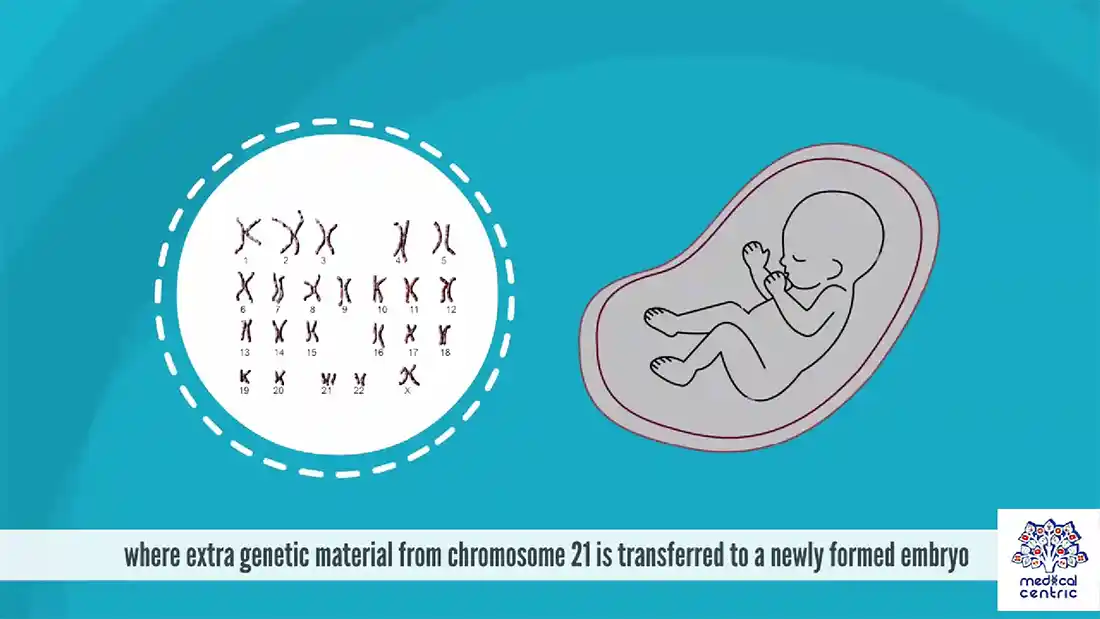

In 1983, the average life expectancy of someone with Down's Syndrome was 25 years old. Today, that life expectancy is now around 60.
Diagnosis can happen as early as 24 weeks in the womb. A pregnant woman can have a test to see if the baby is developing correctly, and there are two tests that can be taken, but none of them guarantee anything. For diagnostic tests, there are three types:
Chorionic villus sampling: this examines material from the placenta.
Amniocentesis: this examines the amniotic fluid (the fluid from the sac surrounding the baby).
Percutaneous umbilical blood sampling: this one examines a blood sample taken from the umbilical cord.
Down's Syndrome is a lifelong condition, and there is no cure for it, however, if viewed from an early age, it can be helped in early life, with clinics running services that will help with mobility and intellectual abilities.
Once a child reaches school age, they may also need support with work and learning, and this is done through SEN placements, and other various supports they are entitled to.
Turner syndrome, Dr. Henry Turner, genetic disorder, short stature, broad chest, low hairline, low-set ears, webbed neck, horseshoe kidneys, ear infection, loss of hearing, small fingernails, infertility.
Turner syndrome is a rare genetic disease that affects 1 in 2,000 female babies each year. It is dominant only in females, and means that they have 1 X sex chromosome instead of 2. It is not linked to the mother's age, and happens randomly within the womb during pregnancy.
Turner syndrome was discovered in 1938 by Dr. Henry Turner. He was an endocrinologist, and he was one of several scientists that found symptoms of the syndrome.

Women with Turner syndrome are more susceptible to middle-ear infections, and once they have this, they are at greater risk of other infections, or hearing loss.
Some distinguishable features of Turner's syndrome include:
As a result of some of these characteristics, a woman with Turner syndrome can prove infertile, and have a lack of monthly periods. Sometimes, as a result of the lack of periods, it can result in the syndrome not being diagnosed until puberty (or the lack of) has shown.
There is no cure for Turner syndrome, however, it can be treated when it had been diagnosed. Throughout their lives, women with the syndrome will be routinely scanned of their hearts, kidneys and reproductive system. Life expectancy is slightly lower than that of the average, but it can lead to a relatively normal and healthy life.
The following still is from a video on Turner syndrome, with the following details:
Please click on the image to view the video.
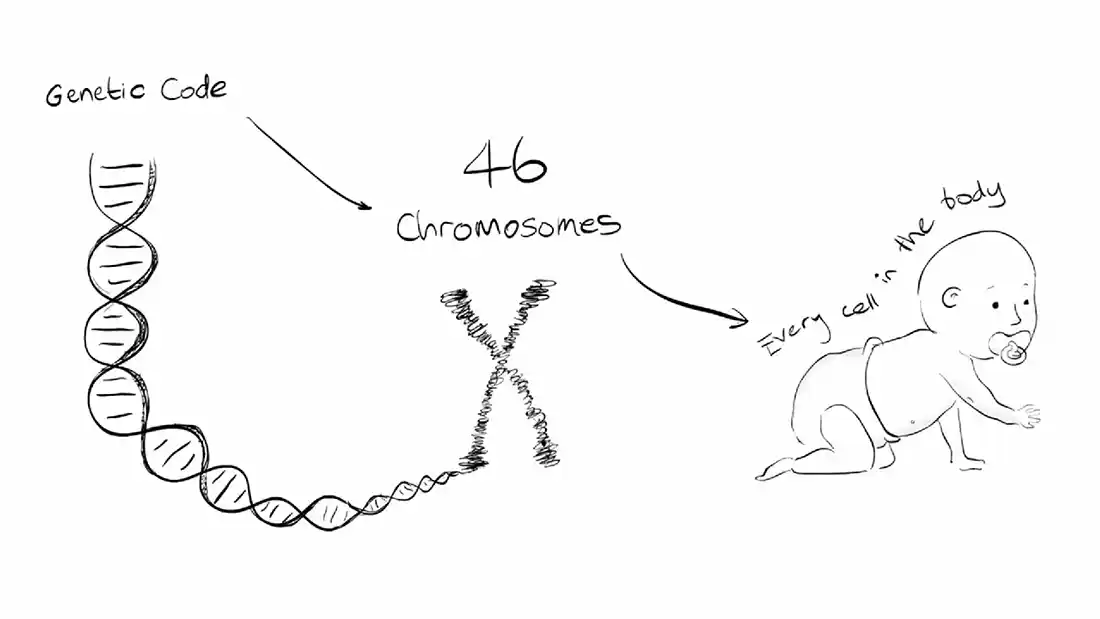
Klinefelter syndrome, Dr. Harry Klinefelter, tall in height, infertility, penis, enlarged breast tissue, extra X chromosome
Klinefelter syndrome affects mainly male patients, and is a genetic disorder where they have an extra X chromosome. It can sometimes go unnoticed, as someone with Klinefelter syndrome can show no symptoms. Others that do show symptoms can show cognitive, social, behavioural and learning difficulties.
Adults can also show a decrease in testosterone production, smaller testes than normal, and other features such as:
Life expectancy is normal when a male has Klinefelter syndrome, and although there are treatments for the syndrome, as a lot of people will go under the radar and not even get diagnosed with it, it goes without treatment for many people who do have a diagnosis, as the treatment is optional. However, treatments include:
Testosterone replacement: with low testosterone levels, this can be replaced, similar in style to hormone replacement therapy, a supplement of testosterone can be taken. This helps with male features, and also can protect against osteporosis and decrease the onset of autoimmune disease and breast cancer.
Education interventions: support can be given to people with the syndrome, much like they would if they were on the ASD scale, or other disabilities. This can be helpful for self-esteem, and to provide that extra support if necessary.
Therapy: several forms of therapy, such as physical, speech, occupational, behavioural and mental health can be given. These can help with learning difficulties, speech and language problems, muscle tone, and other aspects of the syndrome.

A film called Chaos Theory, released in 2008, describes a guy's relationship with his wife, where he then finds out he has Klinefelter syndrome, and that his child might not even be his child (as Klinefelter can make men infertile).
Klinefelter syndrome was first mentioned by Dr. Harry Klinefelter in 1942, similar to how Turner syndrome was first recorded.
The following still is from a video on Klinefelter syndrome, with the following details:
Please click on the image to view the video.
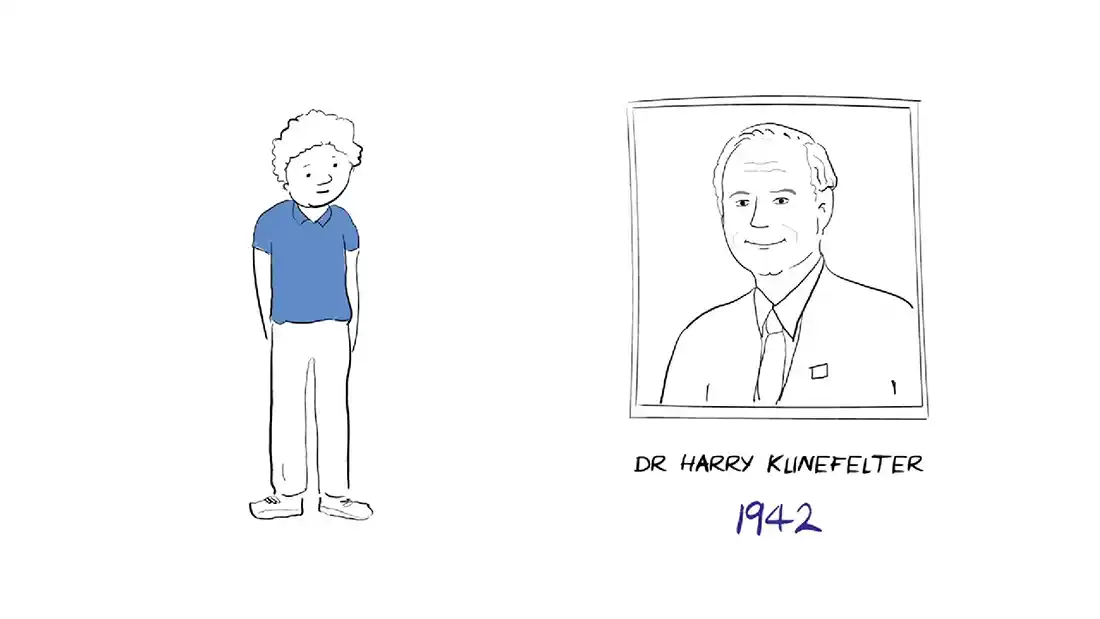
Patau's syndrome, cleft lip, chromosome 13, trisomy 13, brain dysfunction, abnormal eyes, small head, malformed, birthmarks.
Patau's syndrome is a rare genetic disorder that is caused by having an extra copy of chromosome 13 in some or all of the body's cells. It is also known as Trisomy 13.
Where each cell normally carries 23 pairs of chromosomes, a baby with Patau's syndrome has 3 copies of chromosome 13, instead of the usual 2. As a result of this, it can mean that the baby is not developed to full term during pregnancy, or can be stillborn.

Quite distressing to have this happen, but a baby that has Patau's syndrome is unlikely to live past their first birthday, due to complications with the genetic disorder.
The following still is from a video on Patau syndrome, with the following details:
Please click on the image to view the video.
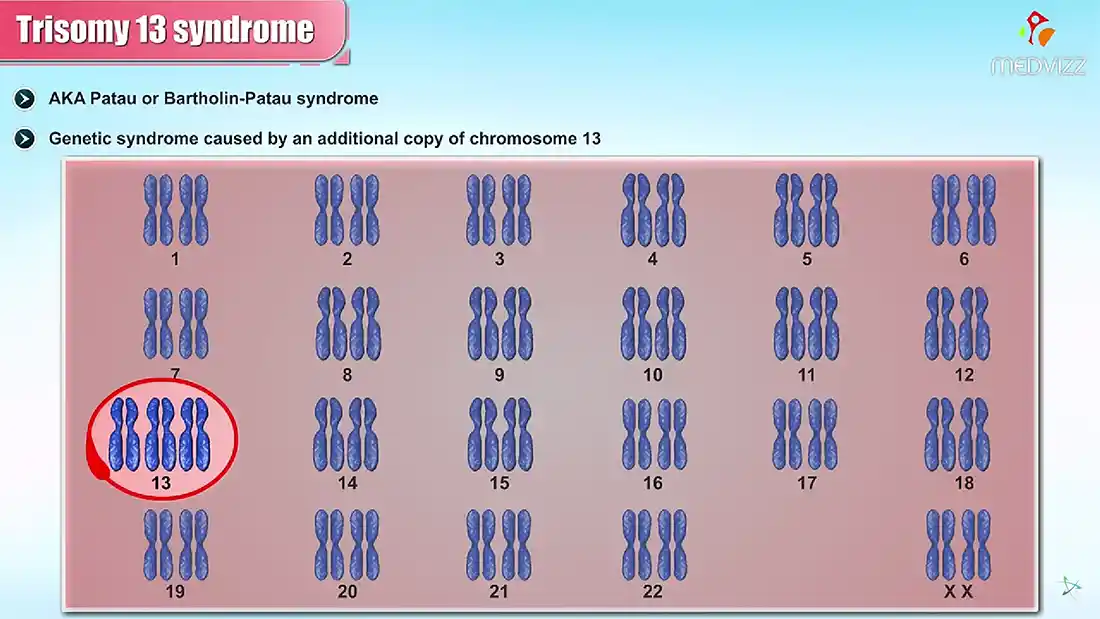
The following features can be attributed to Patau's syndrome:
As most babies die of the syndrome before they reach any significant age, there is no treatment for the syndrome. A baby will receive pallative care as a result of the syndrome until they pass on. There are severe health problems associated with the syndrome. A family will be offered all the support they need if they find out their baby has the syndrome, with counselling and other forms of support.
Disclaimer | About Me | Sitemap
Website design by SyntaxHTML.



Blue icons adapted from icons courtesy of Smashicons.com